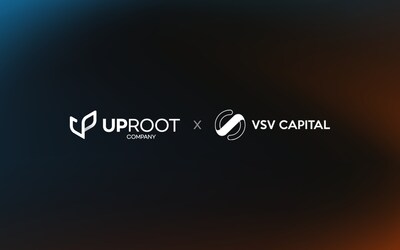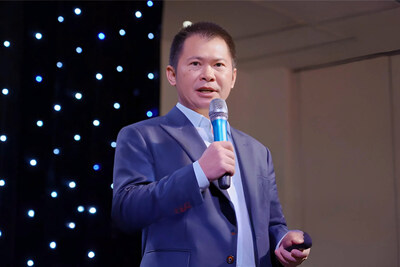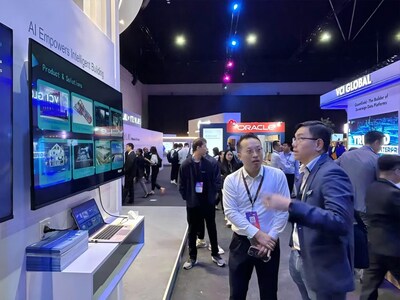TOKYO, Aug. 15, 2025 /PRNewswire/ — Robot Consulting Co., Ltd. (Nasdaq: LAWR) (the “Company” or “Robot Consulting”), a Japanese platform service provider focusing on human resource solutions with an intention to expand into legal technology and the metaverse, today announced its financial results for the fiscal year ended March 31, 2025.
Fiscal Year 2025 Financial Summary
- Revenue was JPY675.6 million ($4.5 million) in the fiscal year ended March 31, 2025, compared to JPY693.1 million in the fiscal year ended March 31, 2024.
- Gross profit was JPY671.6 million ($4.5 million) in the fiscal year ended March 31, 2025, compared to JPY673.3 million in the fiscal year ended March 31, 2024.
- Net loss was JPY534.7 million ($3.6 million) in the fiscal year ended March 31, 2025, a decrease of 19.2% from JPY662.0 million in the fiscal year ended March 31, 2024.
- Basic and diluted loss per share was JPY12.7 in the fiscal year ended March 31, 2025, compared to JPY16.1 in the fiscal year ended March 31, 2024.
Mr. Amit Thakur, Director and Chief Executive Officer of Robot Consulting, remarked, “In fiscal year 2025, we achieved notable progress in our software business while continuing to streamline our operations. Our software revenue increased by 101.0% year over year, driven by the continued adoption of our Labor Robot platform since its launch in 2023. This growth reinforces our commitment to delivering innovative solutions that meet evolving customer needs. We also achieved substantial cost improvements, with the cost of revenue down 80.2% and selling, general, and administrative expenses reduced by 8.3%, resulting in a narrower net loss compared to the prior fiscal year.
“A major recent milestone was our successful listing on the Nasdaq Capital Market under the ticker symbol ‘LAWR’ on July 17, 2025. We anticipate that this achievement will enhance our visibility with global investors, broaden our access to capital, and provide the Company with the resources needed to accelerate innovation.
“Looking ahead, we remain focused on growing the market reach of our products while enriching our product portfolio. We are currently in the process of developing and incorporating desired features to the prototype of Robot Lawyer, with a plan to launch it in November 2025. Together with our growth initiatives and supported by our ongoing operational improvements, we believe these efforts will position us to capture new opportunities, strengthen our market presence, and deliver sustainable value for our shareholders over the long term.”
Fiscal Year 2025 Financial Results
Revenue
Revenue was JPY675.6 million ($4.5 million) in the fiscal year ended March 31, 2025, a decrease of 2.5% from JPY693.1 million in the fiscal year ended March 31, 2024. The decrease was primarily driven by the following factors:
- Revenue from sales of software was JPY151.0 million ($1.0 million) in the fiscal year ended March 31, 2025, an increase of 101.0% from JPY75.1 million in the fiscal year ended March 31, 2024. Since the Company released its software, Labor Robot, in 2023, the number of accumulated users increased, with more users as of the fiscal year ended March 31, 2025 compared to the prior fiscal year 2024, which resulted in higher revenue in the fiscal year ended March 31, 2025.
- Revenue from consulting and support services was JPY524.6 million ($3.5 million) in the fiscal year ended March 31, 2025, a decrease of 15.1% from JPY618.0 million in the fiscal year ended March 31, 2024, as the Company discontinued the e-commerce store set-up services and had no revenue from such services during the fiscal year ended March 31, 2025.
Cost of Revenue
Cost of revenue was JPY3.9 million ($26,000) in the fiscal year ended March 31, 2025, a decrease of 80.2% from JPY19.8 million in the fiscal year ended March 31, 2024. The decrease was primarily due to the discontinuation of e-commerce store set-up services, which had a higher cost of revenue relative to total revenue.
Gross Profit
Gross profit was JPY671.6 million ($4.5 million) in the fiscal year ended March 31, 2025, a decrease of 0.2% from JPY 673.3 million in the fiscal year ended March 31, 2024.
Operating Expenses
Operating expenses were JPY1,205.8 million ($8.0 million) in the fiscal year ended March 31, 2025, a decrease of 9.0% from JPY1,325.1 million in the fiscal year ended March 31, 2024.
- Research and development expenses were JPY86.2 million ($0.6 million) in the fiscal year ended March 31, 2025, a decrease of 16.7% from JPY103.4 million in the fiscal year ended March 31, 2024. The decrease was primarily due to reduced software development costs related to Lawyer Robot incurred during the fiscal year ended March 31, 2024.
- Selling, general, and administrative expenses were JPY1,119.6 million ($7.5 million) in the fiscal year ended March 31, 2025, a decrease of 8.3% from JPY1,221.6 million in the fiscal year ended March 31, 2024. The decrease was primarily due to lower audit-related expenses.
Other Income (Expenses), net and Interest Expenses
Other expenses were JPY0.5 million ($3,000) in the fiscal year ended March 31, 2025, a decrease of 95% from JPY10.2 million in the fiscal year ended March 31, 2024. The decrease was primarily due to the impairment loss on investments as non-recurring expenses in the fiscal year ended March 31, 2024.
Net Loss
Net loss was JPY534.7 million ($3.6 million) in the fiscal year ended March 31, 2025, a decrease of 19.2% from JPY662.0 million in the fiscal year ended March 31, 2024.
Basic and Diluted Loss per Share
Basic and diluted loss per share was JPY12.7 in the fiscal year ended March 31, 2025, compared to JPY16.1 in the fiscal year ended March 31, 2024.
Financial Condition
As of March 31, 2025, the Company had cash and cash equivalents of JPY112.0 million, compared to JPY471.6 million as of March 31, 2024.
Net cash used in operating activities was JPY283.0 million in the fiscal year ended March 31, 2025, compared to JPY317.1 million in the fiscal year ended March 31, 2024.
Net cash used in investing activities was JPY13.1 million in the fiscal year ended March 31, 2025, compared to JPY8.9 million in the fiscal year ended March 31, 2024.
Net cash used in financing activities was JPY63.6 million in the fiscal year ended March 31, 2025, compared to net cash provided by financing activities of JPY346.4 million in the fiscal year ended March 31, 2024.
Exchange Rate Information
This announcement contains translations of certain JPY amounts into U.S. dollars for the convenience of the reader. Translations of amounts from JPY into U.S. dollars have been made at the exchange rate of JPY149.9 = $1.00, which was the foreign exchange rate on March 31, 2025 as reported by the Board of Governors of the Federal Reserve System in its weekly release on April 7, 2025.
About Robot Consulting Co., Ltd.
Robot Consulting Co., Ltd. is a Japanese platform service provider focusing on human resource solutions with an intention to expand into legal technology and the metaverse. The Company’s major product, “Labor Robot,” is a cloud-based human resource management system that helps users track employee attendance, manage sales orders, and journalize accounting items. Robot Consulting also assists users with grant and subsidy applications and provides consulting and support services for digital transformation to small and medium-sized businesses. Robot Consulting also aims to create more software and services related to digital transformation, legal technology, and the metaverse. The Company is currently developing “Robot Lawyer,” which will enable users to pose metaverse-related legal questions on certain metaverse platforms through Robot Lawyer’s AI-powered chat interface, search legal precedents through an AI-driven search engine, and access lawyer matching services for further legal consultation. For more information, please visit the Company’s website: https://ir.robotconsulting.net.
Forward-Looking Statements
Certain statements in this announcement are forward-looking statements. These forward-looking statements involve known and unknown risks and uncertainties and are based on the Company’s current expectations and projections about future events that the Company believes may affect its financial condition, results of operations, business strategy, and financial needs. Investors can find many (but not all) of these statements by the use of words such as “approximates,” “believes,” “hopes,” “expects,” “anticipates,” “estimates,” “projects,” “intends,” “plans,” “will,” “would,” “should,” “could,” “may,” or other similar expressions in this prospectus. The Company undertakes no obligation to update or revise publicly any forward-looking statements to reflect subsequent occurring events or circumstances, or changes in its expectations, except as may be required by law. Although the Company believes that the expectations expressed in these forward-looking statements are reasonable, it cannot assure you that such expectations will turn out to be correct, and the Company cautions investors that actual results may differ materially from the anticipated results and encourages investors to review other factors that may affect its future results in the Company’s registration statement and other filings with the U.S. Securities and Exchange Commission (“SEC”). Additional factors are discussed in the Company’s filings with the SEC, which are available for review at www.sec.gov.
For more information, please contact:
Robot Consulting Co., Ltd.
Investor Relations Department
Email: ir@robotconsulting.net
Ascent Investor Relations LLC
Tina Xiao
Phone: +1-646-932-7242
Email: investors@ascent-ir.com
|
BALANCE SHEETS |
||||||||
|
As of March 31, 2025 and 2024 |
||||||||
|
(Yen in thousands, except share data) |
||||||||
|
2025 |
2024 |
|||||||
|
March 31, |
||||||||
|
2025 |
2024 |
|||||||
|
ASSETS |
||||||||
|
Current Assets: |
||||||||
|
Cash and cash equivalents |
¥ |
112,012 |
¥ |
471,648 |
||||
|
Accounts receivable, net |
21,412 |
84,424 |
||||||
|
Related party receivable |
— |
9,304 |
||||||
|
Deferred offering costs |
131,035 |
67,470 |
||||||
|
Prepaid expenses and other current assets |
13,041 |
76,538 |
||||||
|
Total Current Assets |
277,500 |
709,384 |
||||||
|
Non-current Assets: |
||||||||
|
Restricted cash |
19,470 |
19,470 |
||||||
|
Property and equipment, net |
6,946 |
1,929 |
||||||
|
Operating lease right-of-use assets, net |
880 |
6,778 |
||||||
|
Intangible assets, net |
7,104 |
1,962 |
||||||
|
Investments – Non-current |
134 |
134 |
||||||
|
Other assets |
1,938 |
3,888 |
||||||
|
Total Assets |
¥ |
313,972 |
¥ |
743,545 |
||||
|
LIABILITIES AND SHAREHOLDERS’ DEFICIT |
||||||||
|
Current Liabilities: |
||||||||
|
Trade accounts payable |
¥ |
113,962 |
¥ |
368,883 |
||||
|
Other payable |
58,150 |
64,765 |
||||||
|
Accrued expenses |
1,614 |
936 |
||||||
|
Deferred revenue – Current |
351,937 |
130,824 |
||||||
|
Current portion of operating lease liabilities |
402 |
6,523 |
||||||
|
Total Current Liabilities |
526,065 |
571,931 |
||||||
|
Non-current Liabilities: |
||||||||
|
Non-current operating lease liabilities |
479 |
255 |
||||||
|
Deferred revenue – Non-current |
412,996 |
268,589 |
||||||
|
Other liabilities |
25,817 |
19,470 |
||||||
|
Total Liabilities |
965,357 |
860,245 |
||||||
|
Commitments and contingencies (Note 10) |
||||||||
|
SHAREHOLDERS’ DEFICIT: |
||||||||
|
Ordinary share, JPY1.7 par value – 168,000,000 shares authorized as of |
70,350 |
70,350 |
||||||
|
Additional paid-in capital |
1,060,750 |
1,060,750 |
||||||
|
Accumulated deficit |
(1,782,485) |
(1,247,800) |
||||||
|
Total Shareholders’ Deficit |
(651,385) |
(116,700) |
||||||
|
Total Liabilities & Shareholders’ Deficit |
¥ |
313,972 |
¥ |
743,545 |
||||
|
STATEMENTS OF OPERATIONS |
||||||||||||
|
For the Fiscal Years Ended March 31, 2025, 2024 and 2023 |
||||||||||||
|
(Yen in thousands, except share and per share data) |
||||||||||||
|
2025 |
2024 |
2023 |
||||||||||
|
For the Fiscal Years Ended March 31, |
||||||||||||
|
2025 |
2024 |
2023 |
||||||||||
|
Restated |
||||||||||||
|
Revenue |
¥ |
675,561 |
¥ |
693,104 |
¥ |
83,597 |
||||||
|
Cost of revenue |
3,936 |
19,848 |
70,622 |
|||||||||
|
Gross profit |
671,625 |
673,256 |
12,975 |
|||||||||
|
Operating expenses: |
||||||||||||
|
Research and development |
86,158 |
103,440 |
138,322 |
|||||||||
|
Selling, General and Administrative Expenses |
1,119,641 |
1,221,614 |
342,670 |
|||||||||
|
Total operating expenses |
1,205,799 |
1,325,054 |
480,992 |
|||||||||
|
Loss from operations |
(534,174) |
(651,798) |
(468,017) |
|||||||||
|
Other income (expenses), net |
(511) |
(10,168) |
(10,591) |
|||||||||
|
Interest expenses |
— |
— |
(25) |
|||||||||
|
Loss before income taxes |
(534,685) |
(661,966) |
(478,633) |
|||||||||
|
Provision for income taxes |
— |
— |
— |
|||||||||
|
Net Loss |
¥ |
(534,685) |
¥ |
(661,966) |
¥ |
(478,633) |
||||||
|
Net loss per share attributable to shareholders, basic |
¥ |
(12.7) |
¥ |
(16.1) |
¥ |
(12.3) |
||||||
|
Weighted-average shares outstanding used to |
42,210,000 |
41,127,797 |
38,882,926 |
|||||||||
|
STATEMENTS OF CASH FLOWS |
||||||||||||
|
For the Fiscal Years Ended March 31, 2025, 2024, and 2023 |
||||||||||||
|
(Yen in thousands) |
||||||||||||
|
2025 |
2024 |
2023 |
||||||||||
|
For the Fiscal Years Ended March 31, |
||||||||||||
|
2025 |
2024 |
2023 |
||||||||||
|
Restated |
||||||||||||
|
Cash flows from operating activities: |
||||||||||||
|
Net loss |
¥ |
(534,685) |
¥ |
(661,966) |
¥ |
(478,633) |
||||||
|
Adjustments to reconcile net loss to net cash used in operating |
||||||||||||
|
Depreciation and amortization |
2,892 |
1,832 |
220 |
|||||||||
|
Noncash lease expenses |
6,643 |
6,179 |
2,968 |
|||||||||
|
Loss on disposal of property and equipment |
— |
— |
592 |
|||||||||
|
Impairment loss on investments |
— |
10,000 |
10,000 |
|||||||||
|
Change in allowance for credit losses |
(7,044) |
— |
||||||||||
|
Accounts receivable |
70,056 |
(2,441) |
(81,983) |
|||||||||
|
Related party receivable |
9,304 |
(7,230) |
(2,073) |
|||||||||
|
Prepaid expenses and other current assets |
63,495 |
(51,507) |
(9,555) |
|||||||||
|
Other Assets |
1,950 |
(2,297) |
(594) |
|||||||||
|
Accounts payable and accrued expenses |
(260,857) |
220,609 |
189,607 |
|||||||||
|
Deferred revenue |
365,520 |
175,942 |
219,185 |
|||||||||
|
Operating lease liabilities |
(6,643) |
(6,179) |
(2,968) |
|||||||||
|
Other liabilities |
6,350 |
— |
19,470 |
|||||||||
|
Net cash used in operating activities |
(283,019) |
(317,058) |
(133,764) |
|||||||||
|
Cash flows from investing activities: |
||||||||||||
|
Purchase of property and equipment |
(7,587) |
(3,339) |
(437) |
|||||||||
|
Purchase of intangible assets |
(5,464) |
(2,101) |
— |
|||||||||
|
Acquisition of investments |
— |
(10,000) |
(10,134) |
|||||||||
|
Proceeds from sales of investment |
— |
6,552 |
— |
|||||||||
|
Net cash used in investing activities |
(13,051) |
(8,888) |
(10,571) |
|||||||||
|
Cash flows from financing activities: |
||||||||||||
|
Payment for deferred offering costs |
(63,566) |
(22,015) |
(45,454) |
|||||||||
|
Proceeds from stock issuance |
— |
338,600 |
335,500 |
|||||||||
|
Proceeds received for subscription receivable |
— |
29,834 |
17,327 |
|||||||||
|
Net cash provided by financing activities |
(63,566) |
346,419 |
307,373 |
|||||||||
|
Net increase in cash, cash equivalents and restricted |
(359,636) |
20,473 |
163,038 |
|||||||||
|
Cash, cash equivalents and restricted cash at |
491,118 |
470,645 |
307,607 |
|||||||||
|
Cash, cash equivalents and restricted cash at end |
¥ |
131,482 |
¥ |
491,118 |
¥ |
470,645 |
||||||
|
Reconciliation of cash, cash equivalents and |
||||||||||||
|
Cash and cash equivalents |
¥ |
112,012 |
¥ |
471,648 |
¥ |
451,175 |
||||||
|
Restricted cash |
19,470 |
19,470 |
19,470 |
|||||||||
|
Total cash, cash equivalents and restricted cash |
¥ |
131,482 |
¥ |
491,118 |
¥ |
470,645 |
||||||









